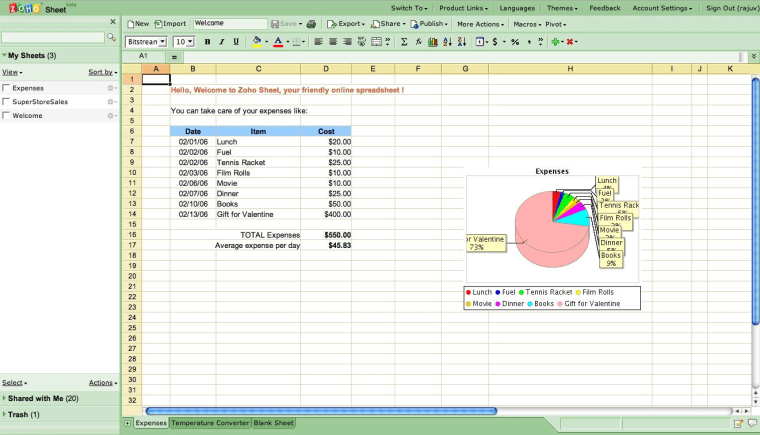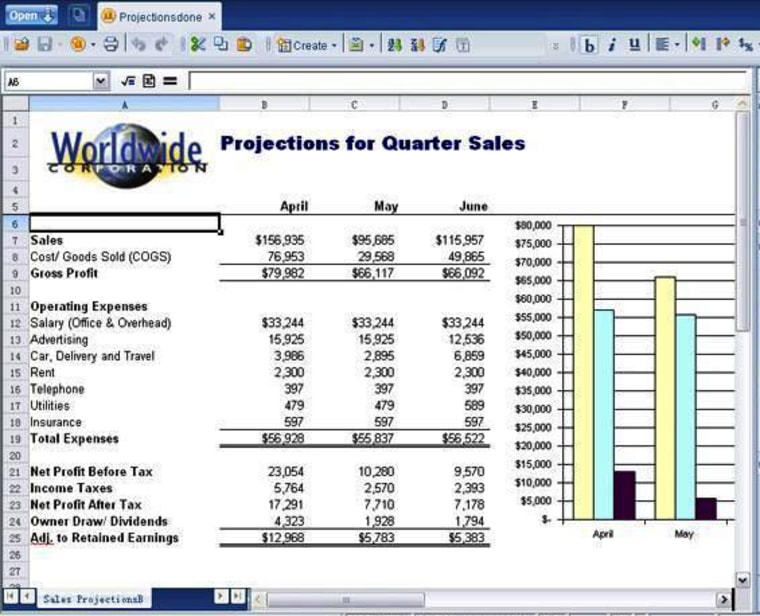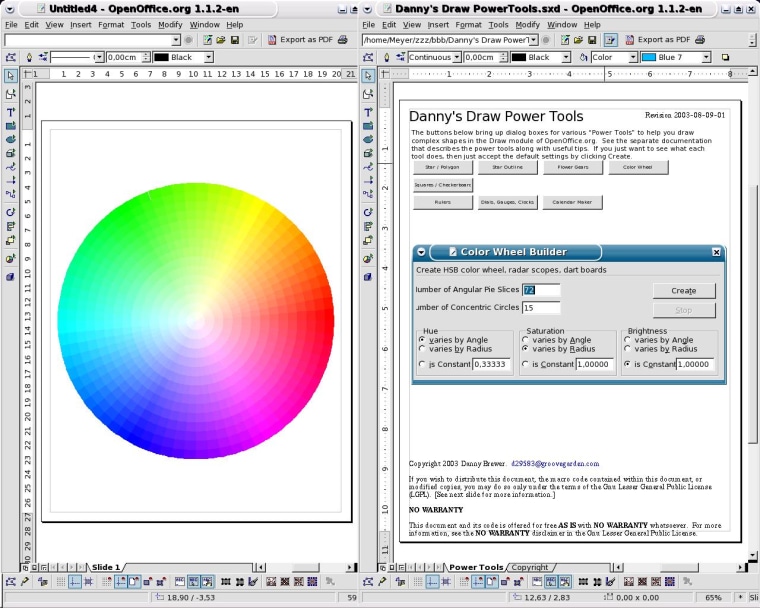Oliver Young was looking at the back of his credit card bill recently and saw some offers for gifts he could get at a discount.
“One of them was for packaged software, where I could buy CDs of games, word processing programs and things like that, and install them on my computer,” he said.
“And I looked at that and it felt so antiquated — the idea that I would need to even install software like that, that I would have them ship me plastic. At this point, I can’t remember the last time I bought a piece of packaged software. And while I’m certainly in the vanguard, I think that’s going to be increasingly common.”
Young is in the “vanguard” as a Forrester Research analyst whose area of expertise includes the evolving use of the Web as home to software programs, such as office suites, rather than on CDs or DVDs to be installed on a computer’s hard drive.
Online-based software isn’t a new concept, but it’s starting to garner interest from consumers, and from businesses, to a lesser degree.
Microsoft recently announced it is testing an online-based subscription of its Office productivity suite code-named “Albany,” as another way to sell the software. (Msnbc.com is a joint venture of Microsoft and NBC Universal.)
There’s plenty of competition out there already, with some programs being free, including Google’s Docs & Spreadsheet program, which also is in beta testing. Among its appeal is that files can be shared easily via the Web for collaborative efforts.
IBM is testing its online Lotus Symphony productivity suite. ZoHo has an online office productivity suite that is free to individual users, and $50 a year for business users. Raju Vegesna, whose title is “ZoHo evangelist,” says there are nearly 1 million users of the product now, with more than 50 percent being consumers and students.
“We’re adding 100,000 users every five weeks,” he said.
Security questions
Security experts have concerns about using software this way, while recognizing its value as a tool for collaboration and its cost savings.
“Really, right now, the main reason to move to online software is its price,” said Johannes Ullrich, chief research officer for the SANS Institute, a national organization that does information security training, research and certification.
“It is still definitely safer to use CD- or DVD-based software that you install on your computer. It’s a more controlled environment, and you know where your data is.”
Ullrich said some consumers who are not comfortable dealing with computer security programs might find online software a plus because “somebody professional is managing these applications, and handling things like security and patches.”
On the other hand, “you’re also putting a lot of trust in these companies running these applications because they now have all your data. You depend on them to secure that data.”

Many online software products do have strong security measures in place.
ZoHo, for example, says it uses secure connections, stores data on “multiple levels,” including data centers that have “multiple levels of restrictions for access,” and uses “state-of-the-art firewall protection.”
The company also is going to start letting users encrypt their documents, said Vegesna.
Mari Nichols, an IT administrator and incident handler for the SANS Institute’s Internet Storm Center, which monitors malicious activity on the Net, has used Google Docs to track progress on a collaborative project.
“So I understand how helpful these applications can be,” she said in an e-mail interview. However, she noted, “Alas, Google Docs have been under attack lately by attackers with too much time on their hands.”
Still, she said, many online software programs do offer security controls that may be better than those put into place by the home user.
“Many of the security attacks we are currently experiencing with bots, spam, phishing and DOS (denial-of-service) are based on taking advantage of ‘always online’ home computers that are not properly secured,” she said in the e-mail. “Having home user security taken care of from the enterprise level is certainly a step in the right direction for Internet security in general.”
Young, of Forrester, sees the security question as a “bit of a red herring.”
“If you think about most of the data breaches, the way that important, valuable information gets lost is not usually by someone intercepting your transmissions,” he said. “It’s usually your laptop gets stolen, or a government laptop gets stolen" with sensitive information on it.
'Software as a service'
Last fall, as part of a survey about Microsoft Office 2007 and Microsoft Office SharePointServer 2007, research firm IDC gauged interest by business, government and education professionals in what is becoming known as “software as a service,” which includes online-based productivity programs.
While nearly 97 percent of the respondents said their companies are using a version of Microsoft Office, IDC noted a growing number of companies also using open source desktop suites and Web-based tools, including OpenOffice, org, Lotus Symphony, Sun StarOffice, Google, Zoho and ThinkFree.
“Virtually all of those using Web-based tools are also using a desktop productivity suite,” IDC said in its report. “This supports our view that Web-based tools won’t replace desktop editing any time soon, but rather are complementary and add value by enabling document sharing.”
Melissa Webster, an IDC vice president who authored the study, said that “from an enterprise perspective, online productivity applications aren’t ready to replace the server world that we’ve lived with for a long, long time.
“But for small and medium businesses, it’s very attractive to look at a hosted server, and to not pay for software, particularly if you don’t do a lot of complex work in a document and don’t have very demanding needs.”

While security is an issue, so is records management. Webster said many businesses and private and public agencies need to maintain electronic records, including e-mails, for up to seven years, and sometimes longer.
Companies “need pretty rich functionality these days for content and records management, so the question is, that document you authored using that online collaboration tool — where did it go? And who’s keeping track of when it needs to be destroyed and when it needs to be retained?” she said.
Draw for home, student users
But for home users or students, online software, with its low- to no-cost approach and its collaborative aspects, may have more appeal.
Young said many people already are comfortable with the notion of Web-based software because they’re using Web-based e-mail and calendar programs by companies like Google and Microsoft.
“When we talk about consumers, I think the movement toward software as a service is inevitable, and is moving quite rapidly,” he said.
“One of the most difficult obstacles to getting people to use software is getting it onto the computer. Software as a service really solves that problem,” he said. “They don’t have to install software, so they don’t need to be technologically savvy. They just have to point their Web browser at an application and start using it.”
Vegesna, of ZoHo, which released its first online program in 2005, said the time is right for online software.
“You used to pay $4,000 for a laptop or a computer, and paying $400 to $500 for an office suite made sense,” he said. “Now, you get a laptop or desktop for $400 or $500. It doesn’t make any sense to pay $400 or $500 for an office suite.”
